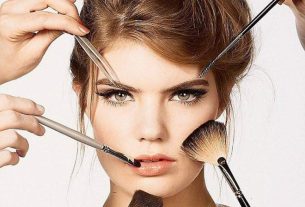Hair transition is a process that consists of stopping chemical processes on the hair, such as relaxing or straightening, to return to its natural wavy, curly or frizzy state.
This process can be started by eliminating all chemically treated hair, getting a short cut or letting the hair grow naturally and gradually cutting off the straightened parts as the hair grows.
To carry out the hair transition, some care is important, such as keeping the hair hydrated, nourished and rebuilt, which can be done with the hair schedule, in addition to using humectant products and sulfate-free shampoos, for example.

What is it for
The hair transition serves to return to natural hair, in the case of wavy, curly or frizzy hair, avoiding chemical procedures such as relaxing or straightening.
This technique can be done by anyone who wants to recover the structure and texture of their hair naturally.
How to make
The first step in making a hair transition is choosing the appropriate technique, which varies from person to person.
The main techniques for making a hair transition are:
1. Big chop
A technique big chop or big cut, consists of cutting your hair short to eliminate all straightened, relaxed or damaged hair, leaving only the short curled or curled strands.
Ideally, the cut should be done by a hairdresser who specializes in curly hair, who can recommend different cuts, such as:
- Tapered haircut: it is a very short cut or “shake” made to eliminate chemically straightened ends, normally recommended for transitioning hair that is shorter;
- Pixie: This cut is also short, but the hair on the back and sides of the head is cut more, leaving the hair on top a little longer and with short bangs;
- Short bob: it is a short cut, but leaving the length of the hair between the ear and just above the shoulders, and can be done in different ways, such as asymmetrical, angled or graduated, according to the person’s preference;
- Long bob: It is a cut in which the hair is a little longer than the short bob, reaching from the chin to the shoulders.
This type of technique can be done by anyone, however, if you are attached to the length of your hair, this may not be the best option to start the hair transition.
2. Let it grow naturally
Letting your hair grow naturally can be an option for people who don’t want to cut their hair or make a radical change in their haircut.
In this type of technique, as natural hair grows, you can have different textures in your hair, being curlier at the roots and straighter along the length and ends.
As your natural hair grows, you can cut the straightened part little by little, until all of the straightened hair is eliminated.
This technique requires constant hair care, such as following a hair schedule, using humectants, sulfate-free shampoos or specific products for hair transition. See how to do the hair schedule correctly.
3. Do protective hairstyles
Protective hairstyles are another hair transition technique that can be done by anyone, especially those who do not wish to have two different hair textures.
In this way, you can create hairstyles, such as natural braids, synthetic braids, such as box braid no knots, or hair buns, which help protect growing hair and do not promote tension on the scalp.
How long does a hair transition last?
The time that the hair transition lasts varies depending on the type of technique chosen.
If a person decides to let their hair grow naturally or opt for protective hairstyles, the hair transition can last up to 2 years, as hair grows on average 1 to 1.5 cm per month.
Care during hair transition
During the hair transition, some precautions are important, such as:
- Be patient and manage expectationsas regardless of the technique used, it may take time to see results;
- Use hydration, nutrition and reconstruction masks, at least once a week or according to the hair schedule. Another option is to have these procedures done in a salon or beauty clinic;
- Cut your hair or ends every 6 to 8 weeksin order to avoid breaking the most fragile hair strands;
- Avoid using a straightener on your hair during the hair transition, as it can dry out the strands more and damage the new curls;
- Give preference to sulfate-free shampooslike the low-poo or no-pooand use leave-in creams or oils to leave hair more hydrated;
- Massage the scalp and always keep it cleanto maintain scalp health, improve nutrition, hair growth and strength, and remove natural oils that can clog pores;
- Detangle your hair carefully and avoid brushing your hair while it is wet.
Furthermore, it is important to drink lots of water and have a diet rich in protein, vitamin A, omega 3 iron, zinc and selenium, as they help with hair growth. See the complete list of foods for hair growth.
Watch the following video with nutritionist Tatiana Zanin with food tips that help hair grow faster:

Sign up for our newsletter and stay up to date with exclusive news
that can transform your routine!
Warning: Undefined array key "title" in /home/storelat/public_html/wp-content/plugins/link-whisper-premium/templates/frontend/related-posts.php on line 12
Warning: Undefined array key "title_tag" in /home/storelat/public_html/wp-content/plugins/link-whisper-premium/templates/frontend/related-posts.php on line 13



